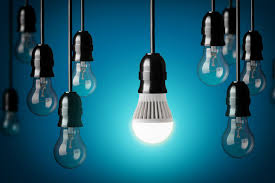As our country is in election mode, political leaders are leaving no stone unturned to win the election, their promises are big and high but they rarely address the issues that actually affect millions of people.
A small village Leisang in the north-eastern state of Manipur made global news last year when it became the “last Indian village to be electrified”.
For decades, political parties have been promising electricity along with road and water in their election manifestos.
In April 2018, Prime Minister Narendra Modi tweeted “Leisang had been powered and empowered”, it seemed that the government had addressed at least one of these three issues.
According to the BBC report, a journalist visited the village last week and found that the power supply was erratic and the villagers neither “powered” nor “empowered”.
As per her report there’s no school or health facility in Leisang and although residents have voter ID cards, they were too few to carry any political heft.

Village chief Tongsat Haokip said all the other villages in their neighbourhood got power in 2017, but when they enquired, they were told they were “not in the plan”.
“But no-one ever gave us a reason, so we petitioned the top electricity official in Kangpokpi. He said, ‘You’re top of our list for next year and told us to be patient.”
In early April last year, there was sudden activity in the village. First some officials came for an inspection and then over two weeks, poles, cables, wires, electrical accessories and a transformer were brought up. Finally, the villagers were told that they would be “connected to the grid” between 5-6pm on 27 April.
Lamneithan Lotjem was among “the 20-30 people”, including women and children, who had gathered at the village chief’s house for the event. Tea was prepared, the switch was flicked on, and all eyes were on the bulb hanging from the front porch.
Ms Lotjem was positioned right under the bulb when it suddenly came on.”We all clapped, jumped up and down with joy. I was shouting, Light is shining, light has come. Everyone was cheering. Some people were dancing,” she says with an embarrassed laugh. The happiness was for short time period.
According to the villagers on a lucky day, they get power for five to six hours. A fault, however small, takes a minimum of three days to attend to and last year, on one occasion, Leisang was left in darkness for three whole months.
Senior power department official in Manipur H Shantikumar Singh admits that the village once lost power for three months because they could not get there to fix it. “It’s remote and difficult to reach, especially if there are landslides on the way,” he said. But he denies that the village receives only six hours of power and insists that there is enough power to supply everyone in the state.
On the day the journalist visited, there was no power in the village. It came after an hour, but the supply was off again in 15 minutes.
Power came to Leising as part of PM Modi’s pledge in August 2015 to electrify every single village within 1,000 days.
In summer 2014 when Mr Modi came to power, 97.5% of India’s nearly 600,000 villages were already electrified, says Abhishek Jain of the Delhi-based Council on Energy, Environment and Water (CEEW).
A village is deemed electrified if 10% of its households, and shared facilities like the school, health centre and community hall, are connected to the grid, he says. By that definition, officials claim that India is fully electrified.
But, Mr Jain says, a connection does not mean an assured supply of electricity and that’s where the major problem lies.
“The government is now promising 24×7 supply to every citizen by end of March, but that is a really distant dream,” he says.
In Uttar Pradesh, the rural population gets power for less than 12 hours a day even though some of the villages were connected to the grid more than two decades back. The situation in some southern states and the eastern states of West Bengal and Orissa is better, Uttar Pradesh and Bihar – remains largely in darkness.
In July last year when Mr Modi interacted via a video link with people from villages that were electrified during his tenure in the past four years”
Village secretary Komlun Khongsai: “We are the forgotten people of India. Electricity is the first thing we got from the government.”
A villager added Leisang’s hope for electricity supply seems like a dream that’s not within reach, at least in the short term.
Leising will have to learn to live with erratic power supply – much like the rest of India.

